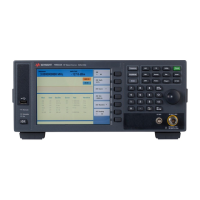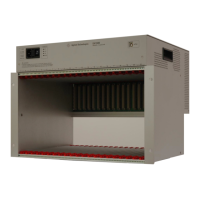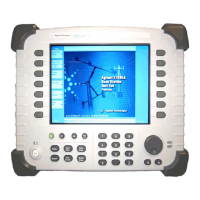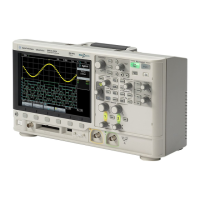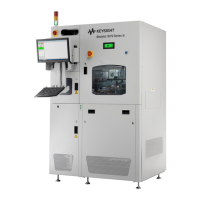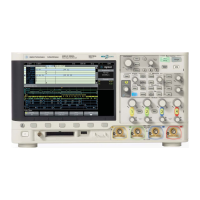Acquisition Modes 7
InfiniiVision 7000B Series Oscilloscopes User’s Guide 225
To make a single acquisition
When you press the [Single] key it illuminates in yellow and the
oscilloscope starts the acquisition system, searching for the trigger
condition. When the trigger condition is met, the captured waveform is
displayed, the [Single] key is extinguished and the [Run/Stop] key
illuminates in red.
• Use the [Single] key to view single- shot events without subsequent
waveform data overwriting the display.
Use [Single] when you want the maximum sample rate and the maximum
memory depth for pan and zoom. (See “Panning and Zooming Single or
Stopped Acquisitions” on page 64)
1 Set the trigger mode to Normal (see “Auto and Normal Trigger
modes” on page 99 for instructions).
This keeps the oscilloscope from automatically triggering immediately.
2 If you are triggering on analog channel events, turn the Trigger Level
knob to the trigger threshold to a level that your waveform will cross.
3 To begin a single acquisition, press the [Single] key.
When you press [Single], the display is cleared, the trigger circuitry is
armed, the [Single] key is illuminated yellow, and the oscilloscope will
wait until a trigger condition occurs before it displays a waveform.
Memory Depth/Record Length
[Run/Stop] versus [Single] — When the oscilloscope is running, the trigger processing
and update rate are optimized over the memory depth.
Single — Single acquisitions always use the maximum memory available—at least twice
as much memory as acquisitions captured in Run mode—and the oscilloscope stores at
least twice as many samples. At slow sweep speeds, the oscilloscope operates at a higher
sample rate when Single is used to capture an acquisition due to the increased memory
available. To acquire data with the longest possible record length, press the [Single] key.
Running — When running, versus taking a single acquisition, the memory is divided in half.
This allows the acquisition system to acquire one record while processing the previous
acquisition, dramatically improving the number of waveforms per second processed by the
oscilloscope. While running, maximizing the rate at which waveforms are drawn on the
display provides the best representation of your input signal.
